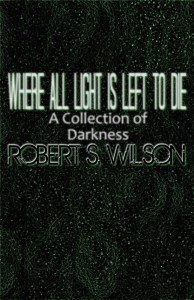
Some short fiction writers have told me they are not fond of single author collections even if it is their own. They claim that the short story collection corrals the works into a hodgepodge that doesn’t respect the power of a stand-alone short story. You read one and off you go on another without digesting the first tale. But what are you going to do? The sad fact is, without anthologies and collections, short fiction has a short life. One exposure in a magazine and poof! Gone! And we all know short fiction doesn’t pay the bills. Edward Bryant, one of the greatest short fiction writers in fantasy, science fiction, and horror told me that he wanted this engraving on his tombstone: “Died broke. Only wrote short stories.”
But the fact remains that short fiction often brings out the best in a writer. It challenges the writer to flesh out their ideas and emotion in a few pages while still involving and entertaining the reader. When it works, it can be astounding.
In the single author collection, Where All Light is Left to Die, Robert S. Wilson shows that he can compete with the big names in the field of worthwhile short fiction. There are thirteen works ranging from science fiction to fantasy and horror and a couple that are hard to classify. All of them can be referred to as dark fiction, a description of the type of stories that bring out the more undesirable and fearful moments in our emotional landscape. The first story in the collection, “The Death Catcher”, is typical and one of the best. It is about a man who can bring dead souls back to the bodies but with questionable results for both the dying and the catcher. It exhibits a number of similarities in the author’s stories; a cautious sensitivity for relationships and families, a mindfulness of the effects of loss and death, and a fondness for the thoughtful ending. “The Boy in the Elevator” is an uncomfortable tale of child molestation with a weirdly satisfying ending. “Forcipules” is an ‘Invasion of the Body Snatchers’ type tale that might also have a hint of dark comedy for anyone who is afraid of bugs. Not all the stories are successful. “Self-Aware” is an attempt to bring detective thriller and science fiction together but it doesn’t work for me. It misses the emotional connection that the other stories have. “The Resurrection of Tommy Derringer” fares better but seems like an intro to a longer and more involved story. However, most of the other stories succeed quite well and should heighten your anxiety factor to an uncomfortable level.
Besides the short fiction, Wilson has included two novellas and one novelette; “The Quiet”, “The Nesting Place” and “Through the Mindhole”. All three shows that the author can branch out and expand his ideas in more complex ways. I read “The Quiet” two years ago and had mixed feelings. Yet this revised and expanded version proves that the author has certainly developed his skills nicely. My favorite of these longer works, and best in the collection, is “Through the Mindhole”, a complex story involving a detective who is transported to an alter universe in a version of himself that is precisely his opposite in many disturbing ways. That one novelette is worth the price of admission.
Overall, this is a good collection and a nice introduction to a young and promising writer. Anyone who appreciate short fiction should check out All Light is Left to Die and expect to enjoy some pleasurably scary moments of dark fiction.








